In a cabinet meeting held this morning, the Japanese government officially decided to discharge the Fukushima nuclear waste water into the sea.
The Japanese government believes that after diluting nuclear waste to a concentration below the standard, the method of discharging it into the atmosphere or the sea is more feasible, and requires Tokyo Electric Power Company to make preparations. The dumping operation will start in two years and last for ten years.

The Japanese side claims that the treated nuclear sewage is safe, and the radioactive tritium content is equivalent to one-seventh of the tritium concentration of the World Health Organization’s drinking water standard, and the International Atomic Energy Agency approves the discharge of Japanese sewage into the sea.
Since the 311 earthquake occurred in Japan in 2011, about 1,000 water storage tanks have been stacked near the Fukushima nuclear power plant to preserve the sewage that has contacted the nuclear reactor and the containment of the cooling reactor core. According to Tepco’s data as of March 18, The island’s first nuclear power plant has stored 1,250,844 cubic meters of sewage.
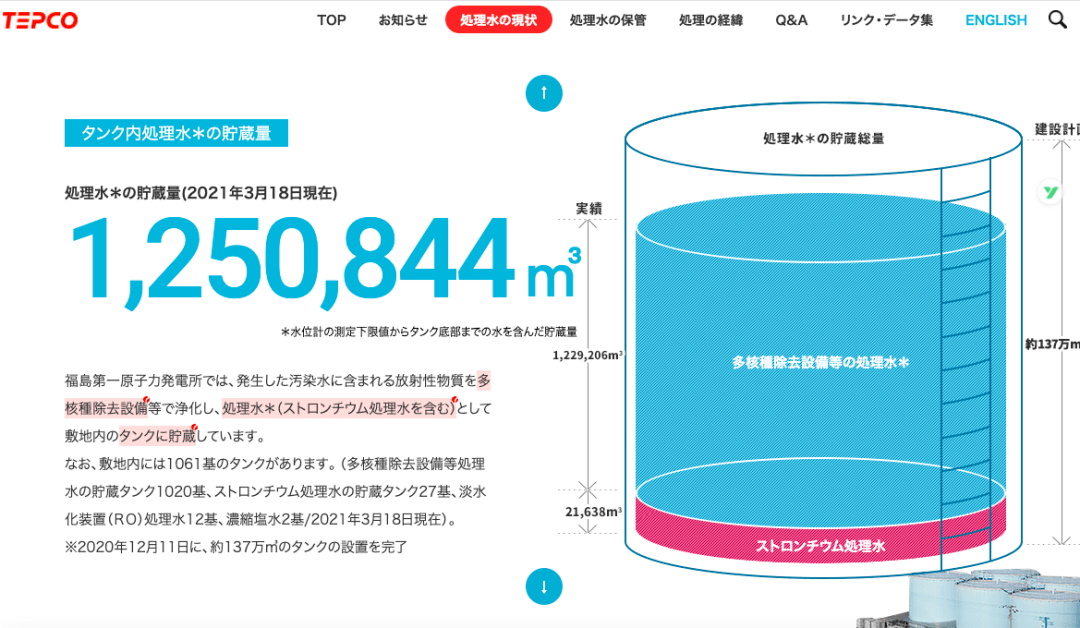
The total amount of sewage stored in the storage tanks built by TEPCO in Fukushima is 1.37 million cubic meters (as of December 11, 2020), and cooling nuclear sewage is continuously generated. If it is not discharged or transferred, the nuclear sewage will be Will face no space to store.
Therefore, for TEPCO, there is not much time left for Japan to hesitate, and the government needs to confirm the discharge to sea water as soon as possible.
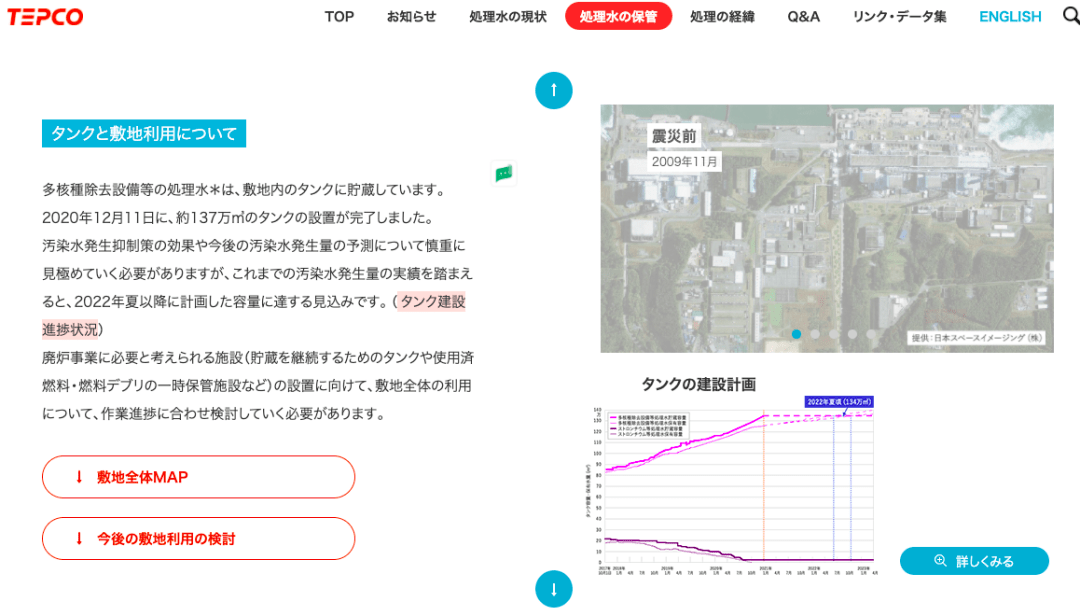
Although the Japanese government and TEPCO Chen Japan are already unable to store and treat nuclear sewage, it is necessary to discharge it into the sea, but Japanese non-governmental organizations and many Japanese people strongly oppose it.

Over 320 Japanese people protested in front of the Prime Minister’s residence. TheyHolding up the slogan “Don’t Discharge Nuclear Wastewater”, he asked the government to withdraw the discharge decision.
Asahi Shimbun interview62-year-old protest memberInoue NyohiroMeans:”The country said it had to have a proper explanation, but it did not reach an agreement with the fishermen.The unilateral emission decision process is undemocratic. ”
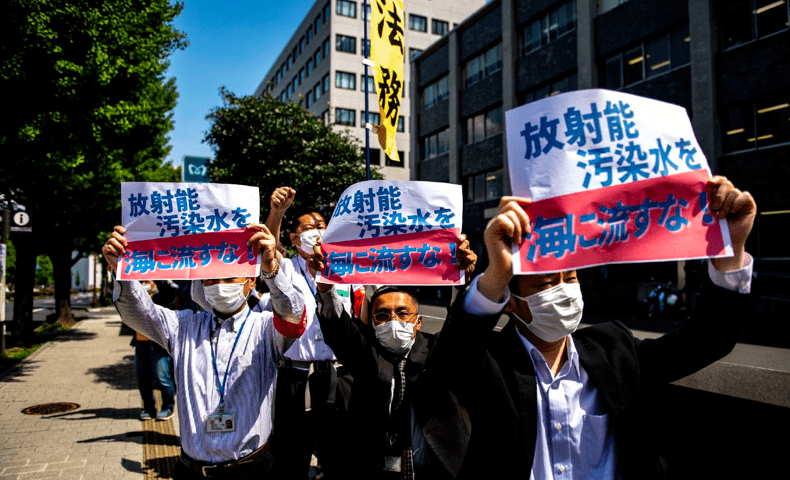
According to a previous survey by Japan’s Asahi Shimbun, more than 55% of the people opposed the discharge of nuclear sewage.
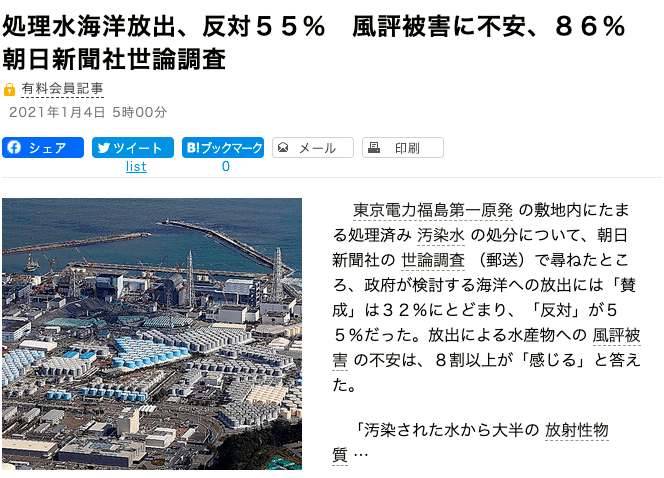
The president of Japan’s National Fisheries Cooperative Association issued a statement on April 13 saying that he regrets the decision (of the Japanese government) and cannot tolerate it. Believing that this is a behavior that tramples on the feelings of all Japanese fishery practitioners, he said that his attitude against dumping into the sea will not change in the future.

Japan is a close neighbor of our country. Once discharged, our country will inevitably be affected by nuclear sewage.
The Ministry of Foreign Affairs of our country said in a statement: “Japan has not exhausted safe disposal methods, regardless of domestic and foreign questions and opposition, and without full consultation with neighboring countries and the international community, unilaterally decided to dispose of nuclear waste water from the Fukushima nuclear power plant accident by way of drainage. Being responsible will seriously damage international public health and safety and the vital interests of people in neighboring countries.”

The South Korean government also believes that Japan’s decision was made without the consent of neighboring countries. It strongly opposes this and should ensure the openness and transparency of nuclear waste water information.
There are currently 31 South Korean organizations in a joint statement condemning Japan’s nuclear wastewater discharge plan, and that Japan’s move is nuclear terrorism. Some South Korean citizens protested in front of the Japanese Embassy in Seoul, demanding that Japan withdraw its decision.

311 organizations from 24 countries around the world participated in the plan to oppose the discharge of Japanese nuclear sewage. On the change, 65430 people also signed the plan to oppose the discharge of Japanese nuclear sewage into the sea.
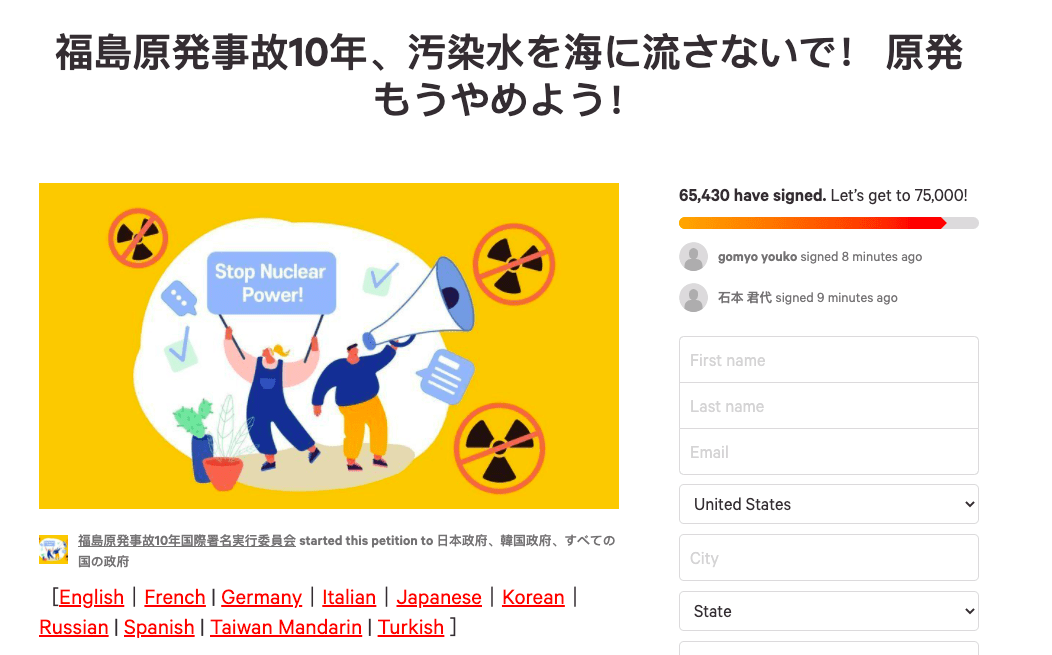
In the midst of a condemnation, the U.S. Department of Foreign Affairs responded by expressing its support for the Japanese government’s decision and believed that the Japanese approach complies with the globally recognized nuclear safety standards.

US Secretary of State Blinken expressed his gratitude to Japan for its efforts to deal with the Fukushima issue on Twitter, and looked forward to the coordination between the Japanese government and the International Atomic Energy Agency.
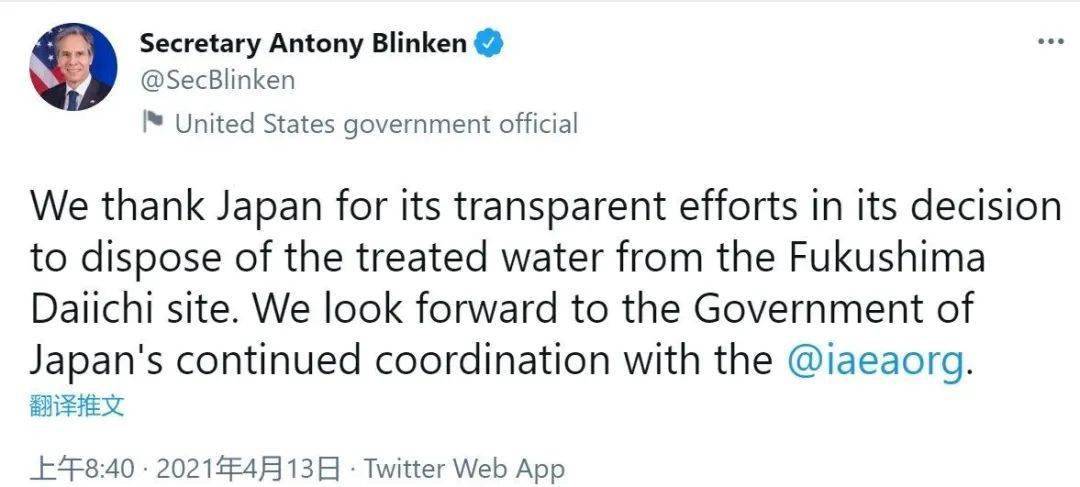
Even after processing,
Is the nuclear sewage from the Fukushima Daiichi Nuclear Power Plant in Japan really safe?
Japan’s basis is that the treated sewage from nuclear power plants in the world is discharged to the sea. Therefore, Fukushima nuclear sewage is discharged after treatment. Even TEPCO’s materials call this type of nuclear sewage “treated water”.

But is the nuclear sewage from the Fukushima nuclear power plant in Japan really the same as the sewage from a normally operating nuclear power plant? The processed and compliant data is probably just a side word of Japan.
BeforeThe US “Science” magazine has issued a warning against Japan’s discharge of nuclear sewagebehavior:“Fukushima nuclear sewageExcept tritiumThere are other radioactive isotopes, including carbon 14, cobalt 60, and strontium 90. These isotopes will have a more long-lasting and complex impact on humans. For example, the physiological concentration of carbon 14 in fish may be 50,000 times that of tritium.While cobalt 60 can be enriched in seafloor sediments, its concentration may rise 300,000 times. “


“Science” magazine stated: “The discharge of waste water with these radioisotopes exceeding the standard may pose a threat to marine life, humans who eat these organisms, and the environment itself.Not to mention, we don’t know anything about other radioisotopes except for these elements that have already been published.Discharging without removing all radioactive materials in place may seem too sloppy.”
Nuclear experts from Greenpeace also pointed out thatThe carbon 14 contained in Japan’s nuclear waste water is dangerous for thousands of years and may cause genetic damage.
Ken Buesseler, a marine chemist at the Woods Hole Oceanographic Institution in the United States, once said, “Any plan that involves release into the ocean requires an independent team to be responsible for long-term tracking of the ocean, seabed, and marine organisms. Potential pollutants.The health of the ocean and the lives of countless people depend on the proper handling of this matter. “
Liu Xinhua, chief expert of the Nuclear and Radiation Safety Center of the Ministry of Ecology and Environment, stated that “historical nuclear accidents, such as the Chernobyl and Three Mile Island nuclear accidents, were all released from the atmosphere.There has not been a nuclear accident similar to the Fukushima nuclear accident that produced a large amount of waste water. Therefore, there is no precedent for the discharge of waste water to the sea after the nuclear accident treatment. “
BeforeThe German Marine Science Research Institute has pointed out:The coast of Fukushima has the strongest ocean currents in the world. Within 57 days from the date of discharge, radioactive materials will spread to most of the Pacific Ocean, and in 10 years will spread to the global waters!
The earth’s ecology is a complete whole. Once Japan discharges nuclear waste water, people all over the world will be affected.




























































You must log in to post a comment.